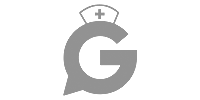I. Introduction: Why Pediatric Milestones Matter on the NCLEX
Growth and development questions pop up in both health‑promotion and psychosocial‑integrity categories. Whether you’re assessing a six‑month‑old’s gross‑motor skills or teaching parents about adolescent psychosocial changes, knowing age‑appropriate milestones helps you identify red flags and provide safe, developmentally appropriate care. This cheat sheet condenses the most tested milestones and includes mnemonics, red‑flag warnings and tips for answering NCLEX questions.
🎯 Free pediatric quiz!
Check your milestone mastery before test day.
Pro Tip for the NCLEX: When a question asks, “Which finding requires follow‑up?” choose the milestone that falls outside the normal age range or indicates regression (e.g., a toddler who suddenly loses speech).
II. Growth & Development Overview (Birth–18 Years)
| Age Range | Gross‑Motor | Fine‑Motor | Language | Social/Cognitive |
|---|---|---|---|---|
| 0–2 mo | Lifts head briefly when prone | Hands fisted | Turns to sounds | Regards faces |
| 3–4 mo | Rolls front→back | Grasps rattle | Laughs, coos | Smiles socially |
| 6 mo | Sits with support, rolls both ways | Transfers objects hand‑to‑hand | Babbling with consonants | Stranger anxiety |
| 9 mo | Pulls to stand, crawls | Pincer grasp starts | “Mama/Dada” nonspecific | Peek‑a‑boo, object permanence |
| 12 mo | Cruises, may walk | Mature pincer | 1–2 words + gestures | Separation anxiety |
| 18 mo | Walks well, climbs stairs with help | Scribbles | 10–25 words | Temper tantrums, parallel play |
| 2 yrs | Runs, kicks ball | Tower of 6 blocks | 2‑word phrases | Begins toilet training |
| 3 yrs | Tricycle, climbs stairs alternating feet | Draws circle | 3‑word sentences, 75 % intelligible | Imaginative play |
| 4 yrs | Hops on one foot | Draws cross, square | Tells stories, 100 % intelligible | Cooperative play |
| 5 yrs | Skips, swings independently | Draws triangle | Counts to 10, knows colors | Follows rules/games |
| 6–12 yrs | Rides bike, organized sports | Cursive begins | Reading, jokes | Same‑gender friendships |
| 13–18 yrs | Growth spurts, puberty | Fine‑motor fully developed | Abstract thinking | Identity & peer influence |
III. Infancy (Birth–12 Months)
Key Milestones
-
Gross‑Motor:
- 2 mo: lifts chest/head when prone
- 4 mo: rolls front to back
- 6 mo: sits with support then independently
- 9 mo: crawls, pulls to stand
- 12 mo: cruises along furniture, first steps
-
Fine‑Motor:
- 2 mo: hands mostly open
- 4 mo: grasps rattle
- 6 mo: transfers objects hand‑to‑hand
- 9 mo: crude pincer grasp
- 12 mo: mature pincer grasp (thumb + forefinger)
-
Language:
- 2 mo: coos
- 6 mo: babbles consonants
- 9 mo: “Mama/Dada” non‑specific
- 12 mo: first true words
-
Social:
- 6 mo: develops stranger anxiety
- 9 mo: object permanence
- 12 mo: waves bye‑bye, plays pat‑a‑cake
Red Flags
- No head control by 4 months
- No sitting by 9 months
- No babbling by 6 months
Mnemonic: “1–2–3, 6–9–12”
1–2 mo lift head → 3 mo push up on arms → 6 mo sit → 9 mo crawl/stand → 12 mo walk.
IV. Toddler (1–3 Years)
Milestones
- Gross‑Motor: Walks well by 15 mo, runs at 2 yrs, climbs stairs at 2½ yrs.
- Fine‑Motor: Tower of 2 blocks at 15 mo, 6 blocks at 2 yrs.
- Language: 50 words and 2‑word phrases by 2 yrs; speech 50 % understandable.
- Toilet Training: Around 2 yrs—start when child is dry for 2 hr periods and can follow instructions.
Red Flags
- No walking by 18 months
- No single words by 16 months
- Loss of language or social skills at any age (think autism, regression)
Mnemonic: “BLOCK 6 at 2”—Tower of 6 blocks at age 2.
V. Preschool (3–5 Years)
Milestones
- 3 yrs: Rides tricycle, draws a circle.
- 4 yrs: Hops, draws a cross or square, names colors.
- 5 yrs: Skips, draws triangle, prints letters, ties shoes.
Language & Social
- 3 yrs: 3‑word sentences, 75 % intelligible.
- 4 yrs: Tells stories; 100 % intelligible.
- 5 yrs: Counts to 10, knows address/phone.
- Imaginative play, begins to share and take turns.
Red Flags
- Unintelligible speech at 4 yrs
- Inability to play cooperatively by 5 yrs
Mnemonic: “Trike‑Circle‑Three” → age 3.
“Hop‑Square‑Four” → age 4.
“Skip‑Triangle‑Five” → age 5.
VI. School‑Age (6–12 Years)
Development Highlights
- Growth slows; 2–3 kg per year.
- Concrete operational thinking: can classify, sort, reverse operations.
- Social: same‑gender friendships, team sports, peer approval important.
- Red Flag: Persistent bed‑wetting (enuresis) after 7 years may need evaluation.
Nursing Tips
- Let the child participate in care decisions when possible.
- Use diagrams and age‑appropriate explanations for procedures.
- Emphasize safety gear for sports and bicycles.
VII. Adolescence (13–18 Years)
Physical Changes
| Gender | Puberty Onset | Key Changes |
|---|---|---|
| Females | 8–13 yrs | Breast buds → pubic hair → growth spurt → menarche |
| Males | 9–14 yrs | Testicular enlargement → pubic hair → growth spurt → voice deepens |
Psychosocial
- Erikson Stage: Identity vs Role Confusion.
- Risk‑taking behavior common—substance use, sexual activity.
- Nursing role: provide confidential counseling, promote healthy choices.
Red Flags
- Delayed puberty: No breast buds by 13 yrs or no testicular enlargement by 14 yrs.
- Depression/self‑harm signs: Withdrawal, poor school performance, substance abuse.
VIII. NCLEX Tips: Answering Growth & Development Questions
- Pick the milestone that’s off‑sequence: If a 3‑month‑old can roll over, that’s atypical—but the NCLEX often asks for delayed milestones (e.g., a 9‑month‑old who can’t sit).
- Regression under stress is normal: A toddler hospitalized for surgery may revert to thumb‑sucking or bed‑wetting. Recognize regression as a normal coping mechanism.
- Prioritize safety: Choose anticipatory guidance focused on injury prevention—e.g., toddlers need gates at stairways.
- When in doubt, sequential order: Motor development proceeds cephalo‑caudal (head to toe) and proximo‑distal (core to extremities).
IX. Quick Mnemonic Round‑Up
- “One is RUN” (walks at 1, runs at 2).
- “Two is SHOE” (kicks a ball, climbs stairs).
- “Three is TREE” (tricycle, climbs well, draws a circle).
- “Four is DOOR” (hops, draws cross).
- “Five is DRIVE” (skips, draws triangle, prints letters).
X. Final Thoughts & Related GoodNurse Resources
Growth and development questions reward students who can quickly match age ranges with milestones. Keep this cheat sheet handy, review it daily and test yourself using practice questions.
Explore these additional GoodNurse articles for a well‑rounded NCLEX study plan:
- Pharmacology Prefixes & Suffixes Cheat Sheet: Rapid drug‑class recognition.
- Electrolyte Imbalances Cheat Sheet: Spot and treat critical lab abnormalities.
- Pediatric Growth & Development Milestones: Key developmental stages.
- Best Nursing Mnemonics for NCLEX Success: Memory hacks to streamline your study.
- How AI is Transforming Nursing Education: Learn how you should utilize AI with your studying
Swap out placeholder links once your new pediatric dosing and respiratory guides go live, and this article will serve as a robust hub for pediatric NCLEX prep.







